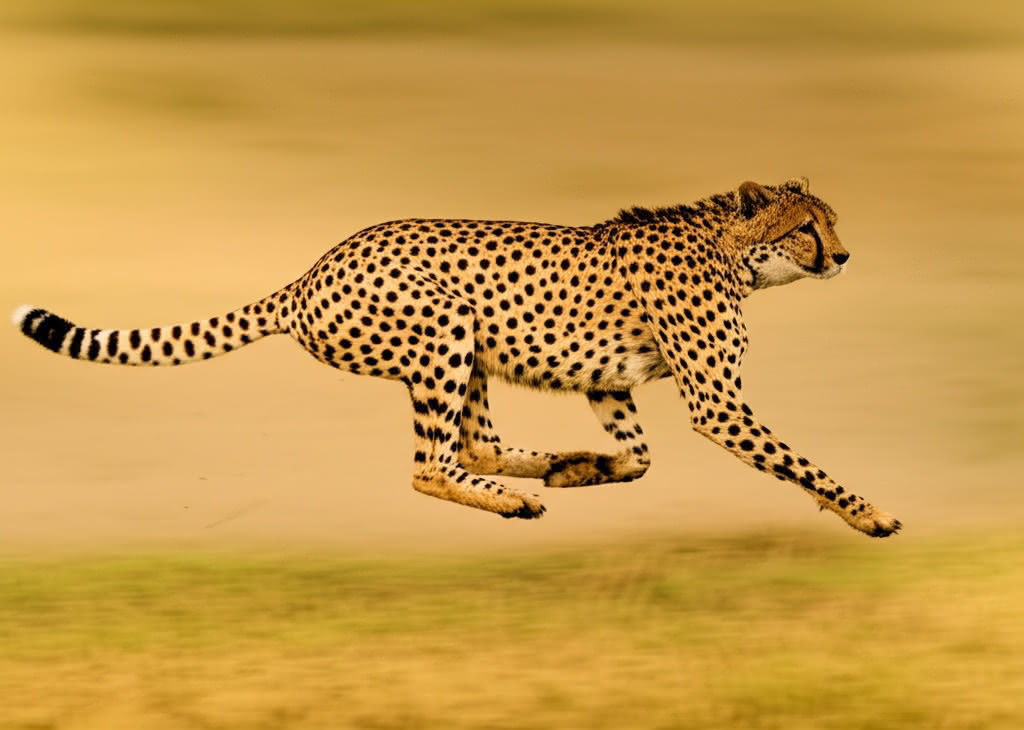How Fast Can a Cheetah Run? The Astonishing Science of Cheetah Speed

The Astonishing Science of Cheetah Speed
The incredible cheetah speed is a marvel of the natural world, making it the undisputed fastest land animal on the planet. But how fast can a cheetah actually run, and what makes this big cat so uniquely built for acceleration? This article breaks down the science behind the cheetah's explosive sprint, exploring its anatomy, the limitations of its speed, and some fascinating facts you might not know.
The Anatomy of the World's Fastest Sprinter
A cheetah's ability to reach breathtaking speeds isn't a fluke; it's the result of millions of years of evolution. Every part of its body is fine-tuned for rapid acceleration and high-velocity chases.
Built for the Burst
- Flexible Spine: A cheetah's spine is extraordinarily long and flexible, coiling and uncoiling like a spring with each stride. This powerful mechanism allows it to cover up to 25 feet (7.6 meters) in a single bound.
- Powerful Hind Legs: The long, muscular hind legs provide immense power for propulsion, launching the cheetah forward with explosive force.
- Lightweight Frame: Unlike other big cats, cheetahs have a slender, lightweight body with long legs and a small head, minimizing air resistance and allowing for maximum speed.
Designed for Stability and Efficiency
- Semi-Retractable Claws: A cheetah's claws are not fully retractable like those of other cats. They function like running spikes, digging into the ground to provide superior grip and traction during sharp turns and rapid acceleration.
- Long Tail as a Rudder: The cheetah's long, muscular tail acts as a counterbalance and rudder, allowing it to make sudden, sharp turns at high speed without losing balance while pursuing agile prey.
- Enlarged Respiratory System: To fuel its muscles during a chase, a cheetah has large nostrils, sinuses, and lungs. This allows it to take in massive amounts of oxygen, which is critical for such an intense anaerobic sprint.
The High-Stakes Sprint: Benefits and Limitations
While its speed is a massive advantage, it comes with significant trade-offs. A cheetah's sprint is an all-or-nothing gamble that pushes its body to the absolute limit.
-
The Ultimate Advantage: Catching Prey: The primary benefit of cheetah speed is obvious: it allows them to hunt some of the fastest animals on the savanna, like gazelles and impalas. Their incredible acceleration—from 0 to 60 mph (97 km/h) in just three seconds—is often more critical than their top speed, as it allows them to close the distance to their prey almost instantly.
-
The High Cost of Speed: Extreme Energy Drain: A cheetah cannot maintain its top speed for long. A typical chase lasts only 20-30 seconds and covers a few hundred meters. The energy expenditure is so immense that the cheetah is completely exhausted afterward and must rest for up to 30 minutes to recover.
-
The Danger of Overheating: The intense physical exertion causes a cheetah's body temperature to spike to dangerous levels (over 105°F or 40.5°C). If a chase goes on for too long, it can cause brain damage or even death. This is why cheetahs must end a chase quickly, whether they succeed or fail.
Cheetah Speed: Fun Facts & FAQs
-
How does a cheetah's acceleration compare to a sports car? A cheetah's 0-60 mph acceleration in three seconds is faster than many high-performance sports cars, including the Porsche 911 GT3.
-
What are the "tear marks" on a cheetah's face for? The black lines running from the corner of a cheetah's eyes down its face are thought to reduce sun glare and help them focus on their prey during a high-speed chase, much like the black grease paint worn by athletes.
-
Are cheetahs in danger? Yes, the cheetah is listed as a vulnerable species. Habitat loss, human-wildlife conflict, and the loss of prey are major threats to their survival in the wild.
Our Commitment to Factual Accuracy
The information presented in this article is compiled from trusted sources to ensure it is both engaging and accurate. We believe in providing reliable content for our readers.
We consider:
- Scientific Journals (peer-reviewed studies on animal biomechanics and physiology)
- Wildlife Conservation Data (reports from organizations like the IUCN and WWF)
- Expert Consensus (information verified by leading zoologists and wildlife biologists)
- Reputable Nature Documentaries (visual evidence and analysis from trusted sources like BBC Earth and National Geographic)
Conclusion
The cheetah is a masterpiece of evolutionary engineering, a creature perfectly designed for a life of explosive speed. Its unique anatomy allows it to achieve feats of acceleration and velocity unmatched in the animal kingdom. However, this incredible ability comes at a high physiological cost, making every hunt a high-stakes gamble. By understanding the marvels and limitations of cheetah speed, we can better appreciate the delicate balance this magnificent animal strikes for survival.
To help protect these incredible sprinters, consider learning more about cheetah conservation efforts from organizations dedicated to their preservation.
You might also like
Cat Years to Human Years: The Ultimate Guide to Your Feline's Age
Curious about your cat's age? Our guide breaks down cat years to human years, explaining the science behind the calculation and what each life stage means for your pet.
🐾 Weird Wheels: The Curious Case of Animal Speed
From sprinting lizards to slothful salamanders, discover the surprising speeds of some of the world’s weirdest animals.